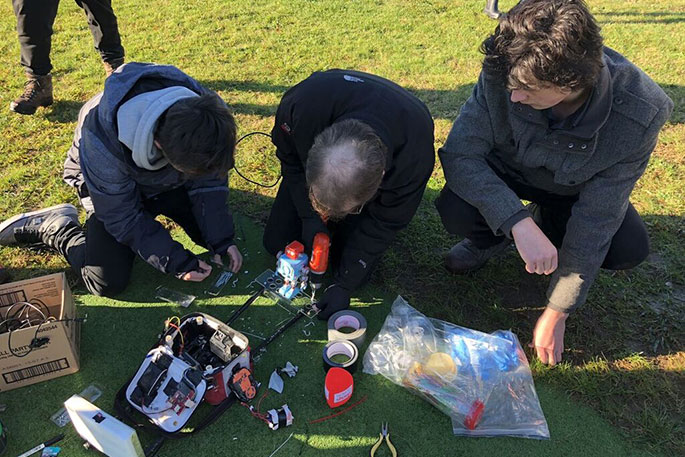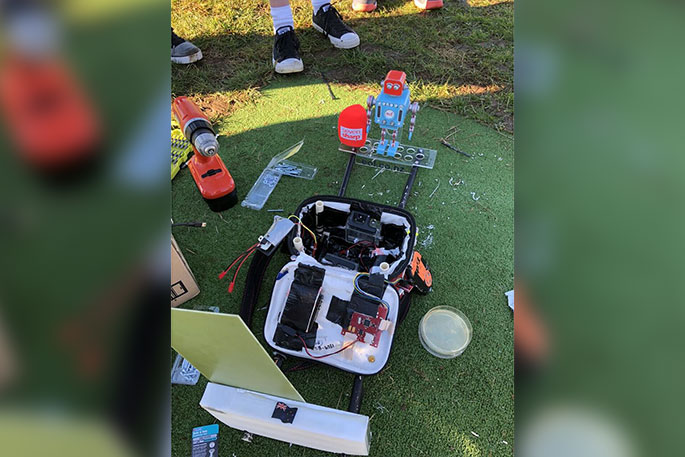Students, teachers and scientists involved in a sub-orbital space weather balloon launch near Waikato have had what can only be described as a 'bittersweet” day.
The balloons were launched on Friday, as part of a global Spaceweather.com and Earth to Sky Calculus initiative which involved a number of students from Toi Ohomai, Otumoetai College and Mount Maunganui College.
More than 250 sub-orbital balloons have been launched throughout the world by Dr Tony Phillips and his team of American science students.
EOL's Terry Coles says it was a day of great anticipation and excitement for all those involved, and sadly a day of some real disappointment too.
'We started with frosty white conditions at the Ohaupo sports ground. One degree Celsius according to my car temperature gauge and my toes can attest to that.


'Despite the chilly conditions, amidst much excitement the two balloons were prepped and the first space weather balloon, complete with Otumoetai College experiments, EOL's Bleep mascot aboard and Seven Sharp's mic sock, took to the air around 11am.
'It was exciting to watch and fantastic to see local students get such a hands on experience thanks to the generosity of the Earth to Sky Calculus team in sharing their knowledge.
'The second weather balloon, with Mount College's beloved baby Pohutukawa tree aboard and Sensum IoT GPS tracking, was launched a little later again with great excitement.
'The tracking allowed the team to safely retrieve the first balloon, in a bushy area near Te Puke and whilst a little wet, the payload was intact.
'It is with much sadness though that we then heard that the second weather space balloon had landed in the sea maybe up to a kilometer off Pukehina beach.
'The last GPS signal showed it there. We have put messages out to ask for assistance in the hope we might still retrieve it.
'It may wash ashore this weekend on the beach on or near Pukehina and all our fingers are crossed we can retrieve the payload.
'There is a lot of expensive equipment on board and I sincerely hope we can retrieve it, you never know your luck, the little tree might still be out there and I truly hope so.”
Tony says the purpose of the experiment is to collect data on earth's cosmic rays at different locations.
Cosmic rays are a high-energy radiation from stars, mainly found around the solar system, but also can be found at lower altitudes, where planes fly.
Tony says cosmic rays can cause things like cancer if people are exposed to too much cosmic rays.
He says they are also unravelling the effects of cosmic rays in Chile and California by doing tests in New Zealand.
Next up for the team is a launch from Kawhia which will involve students from Tauranga Girls, Tauranga Boy and Bethlehem College.




0 comments
Leave a Comment
You must be logged in to make a comment.